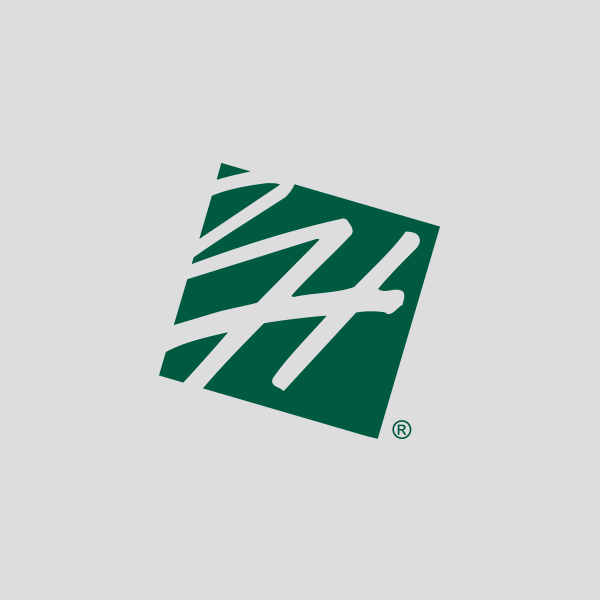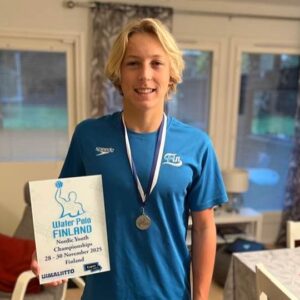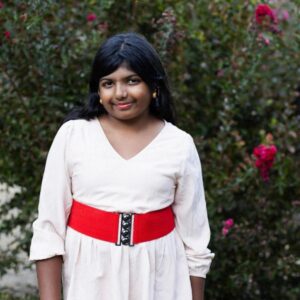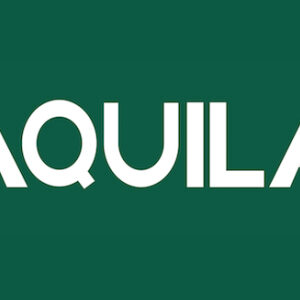This story was originally published in the Summer 2017 edition of Harker Magazine
Technology is bred in the bone at Harker. Classrooms have enhanced learning hardware and software, students use a variety of technology tools in class and at home, and kindergartners through grade 12 students take challenging computer science classes.
Teachers at Harker introduce students to high-tech tools they can use in a host of settings. STEM classes and hands-on experience are part and parcel of the school’s education that extends beyond computer science labs. Starting a decade ago, Daniel Hudkins, director of information technology service and support, helped pioneer the integration of various technologies throughout Harker’s campuses. Harker has always had the attitude that the process and the product were more important than the tool, so the school avoids relying on any one hardware or software product when competitive alternatives are available, he noted.
Early Days
Harker, founded in 1893 as Manzanita Hall, opened its upper school in 1998. Long known for its science-heavy curriculum, the opening of a high school allowed Harker to continue its tradition of excellence while developing best practices as the high school grew. Both the middle and upper schools had the usual array of desktop computers for student use, but to ensure students had access to adequate tools, the school instituted a bring-your-own-device (BYOD) policy for the upper school in its third year, 2000-01, Hudkins said. The math department began using Mathematica for certain classes, requiring students in those classes to bring their own laptops, which laid the groundwork for more widespread BYOD plans.
“By 2002-03, it was decided to require Mathematica, and therefore laptops, for all students taking pre-calculus or above, which extended the program to many other students,” Hudkins said.
About the same time, computers were being introduced in the lower and middle schools. That use has now hardened into routine. “Apple iPads are frequently used in K-grade 2,” Hudkins said. “K-5 also have access to two Mac labs and a full class set of Mac desktops in the library.” Grades 3-5 students are provided with Chromebooks, with a 1:1 ratio of devices to students beginning in grade 4. Grade 5 students bring the devices home with them.
In middle school, students are issued schoo-lowned computers, with the choice of a Mac or PC. Students receive administrative rights during grade 7. Students are responsible for bringing the device home for homework and back to class charged up. At the end of grade 8, families can purchase the computer at a discounted rate.
The early requirements for Mathematica students to have laptops opened the door to all students being permitted to register their own laptops for use at school. By the 2004-05 school year, Hudkins said, the BYOD laptop program was required for all upper school students. With that change, all of the student-use desktops, except for journalism and graphic design, disappeared from Harker upper and middle school classrooms, though the lower school still supplies computers and one desktop resides in the middle school library.
With so much access to technology, Harker aims to ensure that all devices are used safely and appropriately by students. The school uses graduated filtering of the internet on campus to control access to the Web, with the restrictions diminishing as students get older, Hudkins said. Most of the monitoring is done by a combination of direct supervision and appropriate education for self-monitoring. “We do not ‘embed’ any monitoring programs in the devices themselves, although some parents choose to add this on their own,” he added.
One of the greatest advantages of having students bring their own devices to school, Hudkins said, is the ability to move the classroom focus to the students’ work and the students’ control instead of spending time making sure students are able to log on, reach needed software, etc. Furthermore, having students concurrently use a variety of tools to collaborate means they and their teachers spend less time on “click here” techniques and more time on learning new skills.
“As tool sets continuously evolve, students might collaborate in a Google Hangout while preparing a presentation in Microsoft PowerPoint,” Hudkins said. “Some students might be participating on an iPad.” The ultimate goal, he said, is to cultivate technology fluency – how best to find the right tool for the task or problem, how to learn how to use it and how to apply what it can do in effective, and sometimes even novel, ways.
The Other Half of the Equation: Software
The use of software has intertwined with the adoption of hardware in the classroom. Supported apps and software include Microsoft Office 365, Google G Suite and Apple’s software collection, to name just a few. A variety of operating systems, especially MacOS and Windows, are supported; at one time, a significant number of students used Linux variants.
Students at Harker can use Google Apps for Education, for example, to access Docs, Sheets, Forms, Drawings, Slides and Hangouts. “Google Docs has largely replaced Word in the [middle school] English classroom,” said Scott Kley Contini, learning, innovation and design (LID) director for grades 6-8. “The ability to collaborate live within a document has revolutionized English writing. Teachers can interact in real time with students and peer editing can happen in the moment.”
Hudkins noted that in the upper school, research writing requires more complex formatting and Microsoft Word is more frequently used.
The inclusion of technology in classrooms enhances Harker students’ education in myriad ways, Hudkins said. Via these apps and programs, students learn the rhetoric of presentation in a digital age, along with clarity of thought, synthesis of material and analytic thinking, he added.
“Each software and platform has its strengths,” Hudkins said. “iPads offer focused simplicity. Chromebooks offer easy access that is not device dependent. Laptops offer local computation and storage not relying on the availability of the cloud.”
Other software in use at Harker includes Logger Pro for digital data collection, Membean for vocabulary building, Wolfram Mathematica and Fathom for furthering math and statistics skills, and Minecraft for construction and synthesis, he said. “There is also a burgeoning list of tools used in the new Innovation Lab at the middle school,” he added.
All these apps and programs have real value, offering new approaches to understanding coursework. The Geometer’s Sketchpad software, for instance, is used heavily in geometry classes, Kley Contini said, letting students construct geometrical shapes, but the software can be used a variety of ways to understand math, “allowing students to play with mathematical equations and see visual representations of mathematical outputs.”
For higher math levels, the Mathematica program is used selectively to allow students to manipulate mathematical equations as well as begin to explore mathematical logic in a similar way to computer programming, Kley Contini said. This software is used across professional engineering, science and computer disciplines, which can include 3-D image processing and data mining. Students also can use Desmos, which lets them manipulate mathematical variables and see instant output changes. By using these tools, Kley Contini said, math becomes more real for students and helps make connections to concepts that might otherwise get lost in a series or in word problems on paper.
Computer Science in the Classroom
The momentum driving Harker’s use of hardware and software built up incrementally, driven, to a degree, by upper school computer science class development.
Back in 2003, computer science classes were only available in the upper school in the form of AP Computer Science A, AP Computer Science AB and an introductory programming course, said Eric Nelson, upper school computer science department chair.
Computer science soon became a graduation requirement. Technology use began to spread in the lower and middle schools as administrators adapted curricula to build a foundation of computer classes to support the upper school requirements.
“In the lower school, students were learning how to work with technology using AlphaSmart word processors and a computer lab,” Nelson said. “The middle school also had computer labs where the students began to learn some of the fundamentals of programming.”
Since those early computer science initiatives, Harker has developed a full K-12 program. “The major changes occurred when I became department chair in 2008,” Nelson said. “I saw the need for a two-track program in the upper school to address the wide range of abilities and interests in our students. I worked with the department faculty to create two paths through our developing program.”
The fast track was Advanced Programming, Nelson said, which fed into AP Computer Science A with Data Structures. The slower track was Programming to AP Computer Science A to Honors Data Structures. “The content is the same, but the latter is done in four semesters rather than three,” he said.
Students who complete those courses can then take Advanced Topics offerings: AI Expert Systems, AI Neural Networks, Programming Languages and Numerical Methods, which are taught by Nelson on a four-year rotation. Computer Architecture, and Compilers and Interpreters, are taught by two other faculty members on a two-year rotation.
Courses are created and taught by faculty specializing in those fields, Nelson said. Harker also offers an introductory course called Digital World for students who really do not want to take computer science, but need to meet the graduation requirement. “The course is enriching enough where some students have moved on to programming after taking it,” he said.
The formal computer science structure in the upper school brought new requirements to the middle school, which then resulted in a reworking of their entire program, Nelson explained. The middle school introduced computer science entry requirements for their students, which, in turn, influenced changes to curriculum at the lower school.
As a result of this evolutionary process, Nelson said, Harker now offers computer science starting in the elementary school grades. “In kindergarten, the students learn the basics of algorithmic thinking using little robot bugs that get their instructions with cards that are placed on the floor,” he said.
Lisa Diffenderfer, computer science department chair and LID director for K-grade 5, said the lower school computer science department has added a plethora of opportunities for programming with robots in recent years. Grade 1 students, for example, take computer science classes three times per week in their third trimester. “Students have the opportunity to learn programming fundamentals by programming a mini robot called a Bee-Bot,” Diffenderfer said.
With its colorful, kid-friendly design, BeeBot is a tool for teaching young children problem-solving skills and estimation. Diffenderfer said students work as a team to move their Bee-Bot to specific areas on a game board, and use the related iPad app to practice using directional language and algorithmic thinking.
Students in grade 2 can work with another robot, called Dash, to learn programming fundamentals – but with visual programming to command Dash to perform specific tasks. The robot works with an app called Blockly that uses visual blocks rather than text to create code for Dash to follow.
Robots are finding their way into other curriculum areas, Diffenderfer said. For example, there are plans to have fifth grade students in an English class program a robot to retrace Bilbo’s hero’s journey after they read “The Hobbit.”
The robotics program is still growing, with changes made yearly at all levels, Nelson said. In the upper school the most recent additions are two robotics courses – one software- and one hardware-based – that sit between the programming and the AP courses (see Rise of the Machines, page 8, the story of Harker’s competitive robotics program).
These new courses serve two purposes, he said. One is to support the robotics program by giving non-AP level students a stronger background. The other is to catch those students whose enthusiasm has gotten ahead of their abilities. “In other words, if they get a C in Programming, they can still continue in computer science [via the robotics courses], even though they could not move directly into an AP course at that point,” Nelson said.
The AP computer science courses teach the students the foundations of objectoriented programming using Java with an emphasis on algorithmic thinking and good coding practices. Students learn to design and document first and then code second, which is an uphill battle even with professional programmers. “As my former colleague Richard Page was fond of saying, ‘four hours of coding can save you 10 minutes of design,’” Nelson said with a smile.
Because of Harker’s rich computer science offerings in the upper school, and the structure that goes with them, the middle and lower schools had to adapt to meet the newer entry requirements, he said. That subsequently drove new entry requirements between grades and across divisions. As a result, Harker students get early introductions to algorithmic thinking, robotics and programming.
“When combined with the science and mathematics offerings, as well as the research opportunities we have here, our students can discover early on if they have a passion for STEM and have opportunities to follow it,” Nelson said.
Contributor João-Pierre S. Ruth is based in the New York City area.






